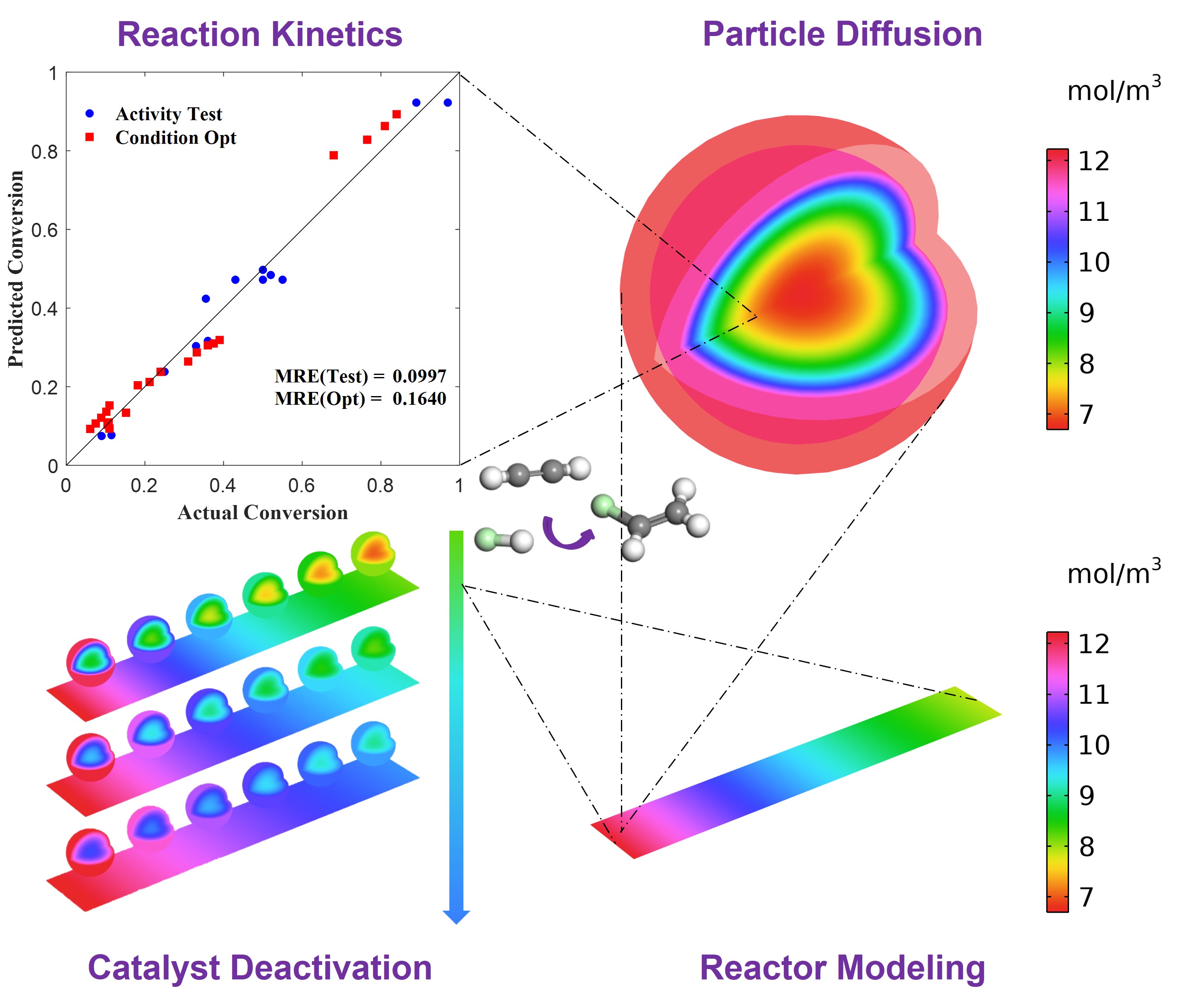2024 AIChE Annual Meeting
(626d) Time-Varying Multiscale Modeling of Heat Transfer and Reaction Behaviors within Particles for Acetylene Hydrochlorination
This study developed a series of flexible sub-models for acetylene hydrochlorination as an example. The microscopic reaction kinetics include models with various levels of complexity, based on power law, diffusion mechanism, and reaction path. Particle distributions include quasi-homogeneous models, non-equilibrium models considering only surface transfer resistance, and multiscale models considering both external and internal diffusion behaviors. Reactor models include one-dimensional packed beds and particle beds with axial differences. Through comparative analysis with experimental data after assembling these sub-models, we discussed under what operating conditions each sub-model should be introduced while comparing different behaviors between mass and heat transfer processes. We particularly focused on examining the influence of reaction heat effect as well as heat transfer behavior within particles and at gas-solid interfaces.
Further analysis was conducted on the deactivation behavior of particle bed reactors across multiple temporal scales. By simulating the time-varying interaction between deactivation kinetics and particle bed transfer-reaction models, we elucidated the non-uniform distribution of catalytic activity within particles during catalyst bed long-term operation. We quantitatively analyzed how the transfer behavior at the particle-scale affects the evolution of reactors between different steady-states, to describe industrial-scale deactivation phenomena. This research will contribute to a more comprehensive and in-depth understanding of particle bed transfer-reaction and long-term operation processes, providing suggestions for model development and reactor design.
